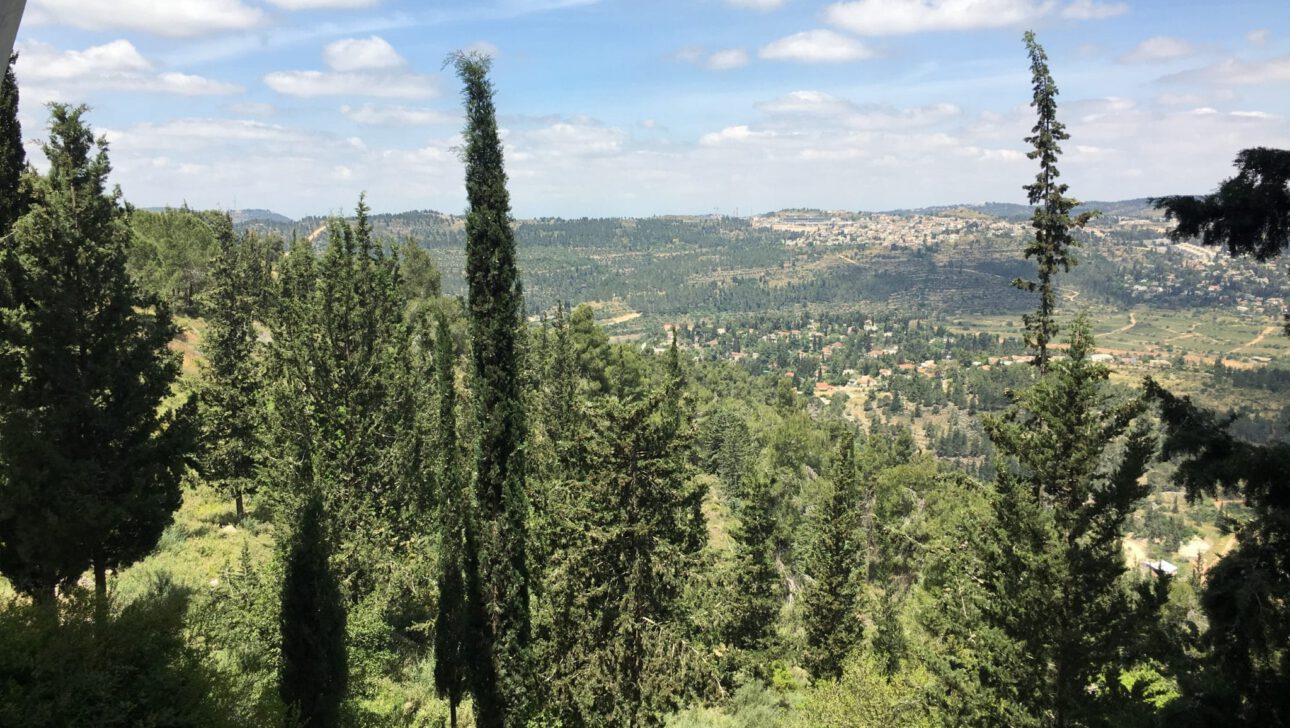Just a few dozen empty shelves—that is all that remains of at least 1 million people who perished in the Holocaust. Entire communities wiped out, families destroyed, lives ended—most of these recorded in boxes of testimony that sit on shelves in the final room at Yad Vashem. But the stories of so many people, our people, have not been told. They are just empty shelves.
To me, this may be the most striking of the many metaphors and moments of juxtaposition we have been exposed to during this experience. From the name “March of the Living” to seeing houses right next to Majdanek to singing Am Yisrael Chai as we marched from Auschwitz to Birkenau, there have been so many emotional ironies during these past two weeks.
Today at Yad Vashem, as we walked through the winding tunnel that led to the exhibitions about various aspects of the Holocaust, we slowly came closer to a literal light at the end of the tunnel. When we completed our visit through this main subterranean part of the museum, we exited through the doors and realized the light we had been following was a beautiful blue sky over the hills outside of modern-day Jerusalem. In just 75 years, the Jewish people had emerged from the hell we witnessed in Poland and inside the tunnel at Yad Vashem and we had built the beautiful country that appeared before us.
Soon after, we went to Mount Herzl and saw the graves of those who had helped make Israel the nation it is today. We then took the bus into Jerusalem and explored the Mahane Yehuda Market, where the absolutely overwhelming crowds aggressively reminded us of the bustling life that exists in Israel.
In just one day, we had witnessed so much of the past century’s history. We had seen images of students singing Hatikvah in Germany in the 1920s (it had been created as an anthem for the Jewish people in the late 19th century) and once again learned about the atrocities that almost all of these kids and their families would endure just 20 years later. We read about the over 1000 Holocaust survivors who were murdered in the years after the war ended, and then we personally experienced the most vibrant elements of the state of Israel that would be created in 1948 that, though imperfect, would provide a home away from this continuing anti-Semitism.
And as truly reinvigorating as they are, I have almost found myself getting lost in these symbols and metaphors and thoughts of “we’re still here.” We must remember that each box on those shelves at Yad Vashem held the stories of unique individuals whose stories are now ours to tell. When we talk about how the children who were killed in the Holocaust could have been the next great artist or scientist, we should mention Petr Ginz, who painted scenes of what he witnessed in the Terezin Ghetto and dreamed of being an astronaut.
And when we check the news and see stories of concentration camps for Uighur Muslims in China, like I did this morning literally minutes before leaving for Yad Vashem, we should think about what we can do about it. We have to keep marching, educating, and telling stories like those on the shelves at Yad Vashem, and we must be able to say, “We’re still here. And we’re making sure others are, too.”
-Matthew Youkilis

